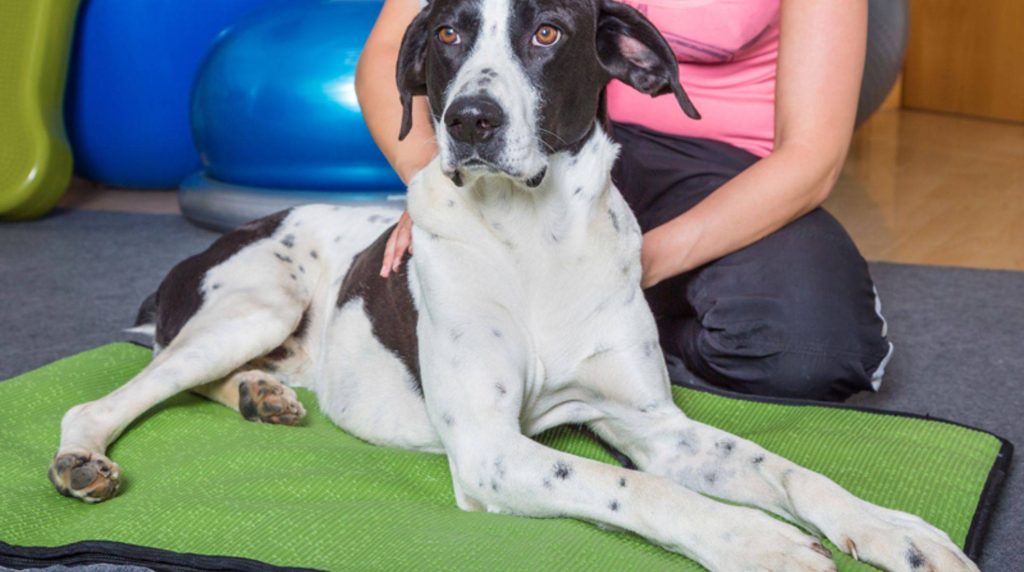Rheumatoid arthritis or rheumatism in dogs leads to painful joint inflammation. The symptoms initially appear in phases but can become chronic. An autoimmune reaction in the body causes rheumatism. The therapy aims to alleviate the symptoms. Rheumatism is not yet curable.

Unlike arthrosis, rheumatism in dogs is not triggered by gradual joint wear and tear. The cause of the painful disease is an autoimmune reaction. In this case, the dog’s defenses are not only directed against pathogens but also healthy body cells in the articular cartilage. As a result, more and more articular cartilage is broken down, and the joint is permanently destroyed.
But how can rheumatism in dogs be diagnosed and treated? Find out below.
You can recognize rheumatism in dogs by these signs
Typical symptoms of rheumatism in dogs are painful, swollen joints. In the advanced stage, the joints can also show deformations. Over time, the affected dog also often suffers from muscle atrophy and corresponding physical weakness. Other possible signs of rheumatism in dogs are:
● lame
● Stiffness
● loss of appetite
● fever
● Swollen lymph nodes
In addition, there are other organ diseases as the disease progresses. Dogs with rheumatism will one day also suffer from kidney failure, pneumonia, tonsillitis, and urinary tract infections.
Rheumatism in dogs: Symptoms appear in spurts
There are days when your dog suffering from rheumatism is doing comparatively well; its condition suddenly deteriorates again. This is because rheumatism occurs in flares. Several joints are often affected simultaneously, but the symptoms of rheumatism can affect other joints from one episode to the next. The symptoms can subside and even disappear entirely between attacks. But the symptom-free phases become shorter and shorter over time. In the final stages of the disease, your dog suffers chronically, i.e., permanently, from joint pain.
This is how the veterinarian can diagnose rheumatism in dogs: Diagnosis.
Luckily, rheumatism is relatively rare in dogs. The veterinarian will first clarify whether the symptoms are due to other joint diseases such as arthrosis. He listens carefully to your dog’s medical history. This procedure is called anamnesis and gives the veterinarian the first indications that point to rheumatism instead of arthrosis. For example, in the case of arthrosis, the symptoms do not occur in spurts but start mildly and get progressively worse as the wear and tear of the joint increases.
An X-ray examination can further strengthen the initial suspicion. In rheumatism, the bone surface appears uneven, the bone seems porous, and the joints can be deformed. In the later course, the soft tissue mineralizes, i.e., solidifies, which can also be seen on the X-ray. In addition, the vet takes synovial fluid and analyzes it. Elevated levels of inflammation are another indication of rheumatism in dogs.
Treating rheumatism in dogs with medication
Rheumatism therapy is about relieving the symptoms and slowing down the progression of the disease. Unfortunately, autoimmune diseases cannot be cured. The veterinarian will prescribe pain relievers and anti-inflammatory medications to improve your dog’s quality of life. The dose is individually tailored to your dog. After all, the worst symptoms of rheumatism can be alleviated in this way.
Physiotherapy and hydrotherapy for dogs with rheumatism
In addition to treatment with medication, it is essential to maintain the mobility of the joints in affected dogs for as long as possible. Once the most significant pain and inflammation have been taken care of by the medication, your dog can and should continue to exercise. Light sports that are not too strenuous for the joints help. Leisurely walks are also advisable. In addition, physiotherapy for dogs with rheumatism is a real asset. Special massages and exercises ensure that the joints hurt less.
Hydrotherapy, i.e., exercises in water that are gentle on the joints, also helps to improve his condition. You can also go swimming with your sick dog regularly – the water supports its weight, so it can move and exercise its joints without additional stress.
Nutrition tips for dogs with rheumatism
If your dog suffers from rheumatism, it is advisable to pay attention to healthy body weight. Skip treats and stick to the type and amount of food your vet recommends. Green-lipped mussel extract supplements may be good for the joints – discuss this option with your veterinarian.








